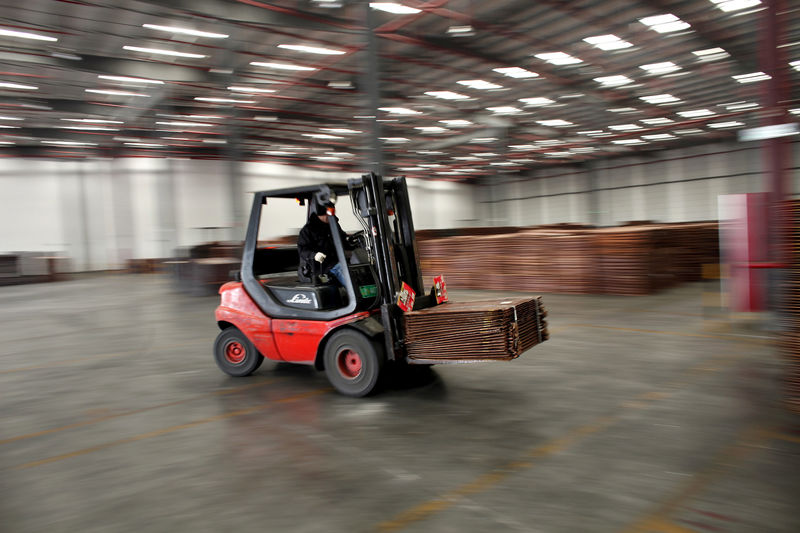* Disruptions early in year prompted worries about shortages
* Extra scrap copper, ramping up of mines helping to fill gap
* Some analysts now expect surplus instead of deficit
* Graphic on copper surplus: http://tmsnrt.rs/2sTQstZ
By Eric Onstad
LONDON, June 12 (Reuters) - Disruptions at the two biggest copper mines early this year may have only a muted impact on prices after a surge of scrap metal partially filled the supply gap and a recovery in mine output is due to help in the second half.
A strike at the world's biggest copper mine, Chile's Escondida, and other disruptions initially prompted worries about shortages of the metal used in construction and power transmission, pushing up prices.
Analysts polled by Reuters in April expected a copper deficit this year of 17,000 tonnes versus a consensus forecast in January of an 80,000-tonne surplus. MET/POLL
But some analysts now say supplies will be adequate and that the market will end the year with a modest excess of metal.
"It's a smaller surplus, but it's still essentially a surplus," said Karen Norton, an analyst with Thomson Reuters GFMS.
"There were enough stockpiles during that critical period and there was also the secondary (scrap) offsetting as well."
The benchmark copper price on the London Metal Exchange CMCU3 climbed 12 percent early in the year to a peak of $6,204 a tonne by mid-February as investors fretted over supplies, but it has since given up 7 percent.
BIG MINES RAMP UP
BHP Billiton BLT.L BHP.AX lifted force majeure this month at Escondida after a strike that lasted 43 days, the longest in Chilean mining history. second-biggest copper mine, Grasberg in Indonesia, has been ramping up shipments after the government granted an export permit in April following a 15-week outage related to a dispute over mining rights.
On Friday, Freeport-McMoRan Inc FCX.N said it was "on a path" to get a new mining deal with Indonesia this year for Grasberg, although the company continued to grapple with labour problems. the Grasberg situation has created some uncertainty, other mines such as Chile's Collahuasi have agreed new contracts. forward, we see limited scope for further major, labour-related supply disruptions this year," analyst Natasha Kaneva at JPMorgan (NYSE:JPM) said in a note.
Kaneva forecasts copper mine production to grow by an average of 2.1 percent year-on-year from April to December and the copper price to weaken to $5,000 by the end of the year.
Mining operations could also benefit from having had time during the strike to perform extra maintenance, said analyst Vivienne Lloyd at Macquarie.
The market remained relatively well-supplied when the two biggest mines were shut after high copper prices late last year drew a wave of scrap metal into the market.
"It looks as though the scrap inflow into the market really diluted the impact of the primary shortage, because we saw scrap moving in, not so much into smelter furnaces, but in place of cathode being consumed by the fabricators," Lloyd said.
The flow of scrap is now dissipating, which may support copper prices temporarily, she added.
"We saw the second quarter as a bit of a deficit, but we think it will move back towards surplus in the second half," Lloyd said.
In another sign of healthy supply, copper concentrate treatment and refining charges have risen to the highest levels since mid-February, specialist publication Metal Bulletin said.
The charges, paid to smelters to process concentrates into metal, move higher when supply rises.
<^^^^^^^^^^^^^^^^^^^^^^^^^^^^^^^^^^^^^^^^^^^^^^^^^^^^^^^^^^^ Graphic on global copper surplus
http://tmsnrt.rs/2sTQstZ
^^^^^^^^^^^^^^^^^^^^^^^^^^^^^^^^^^^^^^^^^^^^^^^^^^^^^^^^^^^>
